Imagine all of your classmates are on a fieldtrip. They have traveled to Earth from the Centaurus Arm of the Milky Way. Introduce them to your corner of the Milky Way.
Centaurus Arm has the largest group of 26 Red SuperGiant stars known as the RSGC2 cluster. Then the RSGC1 cluster has 14 SuperGiant Red Stars only a few hundred light years away from RSGC2. We don't have many Red SuperGiant stars in our neighborhood. It is in the region where the Centaurus Arm connects to the central bulge of the Milky Way. Since all these stars are near death, all turning into supernovas. Astronomers don't know anywhere else in this galaxy with so many Red SuperGiants. You can see properties of stars that are ready to explode. Despite RSGC2 having all these old Red SuperGiants, it also has a gigantic cluster of new stars that are less than 20 million years old. The dust glows red with all the yellow-colored Red SuperGiants stars with a blue patch, a stellar nursery of newborn stars. The supernovas would appear to be pink outlined blue ovals in the sky.
What is it like "in your neighborhood" and how is it different from the Centaurus Arm?
The Solar system is in the Orion Spur, a minor arm. The Solar system is also in the local bubble of this Orion Arm which was formed by a supernova. This bubble has prevented flows of cosmic radiation and gas. Even though the solar system is safe now, it is moving towards the Local Fluff, a interstellar cloud with impact within 50,000 years. It has twice the gas of the local bubble Solar System is now in. Gases stronger than Solar wind can inter the solar system and affect Earth in a bad way. The Orion Spur has many nebulas including Cygnus area like North America and Pelican nebula. Then there is the Orion nebula, and Crab nebula (pulsar). There are stars including Orions belt, Polaris, Rigel, Deneb, Betelgeuse, kCas, uCap, pCas, yCyg. and SCMa. The outer edge of the Orion arm is the Gould's belt that is 150 light years. Gould's belt has many young stars in it and also has the largest stars in the belt similar to RSGC2 and only 30 million years old. Gould's belt looks yellow on top, red in the middle and bluish on the bottom. Gould's belt was created when a gas cloud full of dark matter collided with some Milky Way disk.
How would the neighborhood change if your solar system started moving toward the core of the Milky Way Galaxy?
The neighborhood of the solar system would change when it was near the Galactic Center of the milky way, because it be closer to a super massive black hole. One parsec away from the supermassive black hole would be a collection of a million stars. The stellar density would be 100 million times larger than our solar neighborhood. This would allow frequent close counter collisions. There would be a large interstellar cloud of dust. Life as we know it on Earth should cease to exist when radiation and gas become greater than the solar winds can handle. The Galatic nucleus would have more X-ray and gamma ray activity that is 1033 watts (ie: million times that of the Sun). The sun would eventually start orbiting the supermassive black hole. The supermassive black hole in the galactic center already has the gravity required to separate clusters of stars. The local bubble would separate as it moves towards the galactic center for certain. Unless you're in a molecular ring which is filled with young stars, the more inside the solar system goes, the older the surrounding stars systems would become. The observers on Earth could see the galactic center better. When the Solar System moves to the galactic center, you would see a more dense display of brighter stars full of color. There would be more gases and star clusters near our solar neighborhood and life would be different with it breaching the solar wind.
Sunday, January 10, 2010
The best, most secure, most working, Linux ever

To make the best Linux ever, you need to download Ubuntu 9.1 and Kubuntu 9.1 Live CDs. Install Ubuntu 9.1 onto the hard drive. Go into the terminal and type "sudo apt-get install kubuntu-desktop".

Normally, I was too lazy to put into that one line so I kept downloading RPM based Fedora and OpenSuse, because I'm only human.
That other distro I'm using since 2003. It's American.
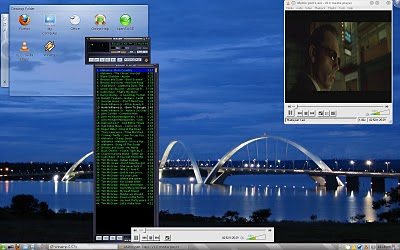
Saturday, January 9, 2010
Been in Melbourne, Australia


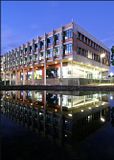







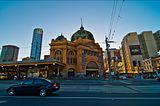


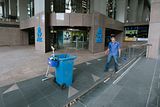
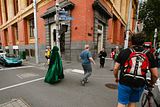
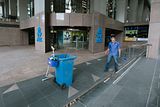
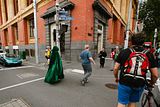



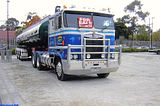
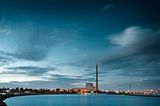

I was in Australia for one week. Looked at all the landscape. It took me a year to fund this vacation. My cousin at the Yokosuka Naval base said Australia was one of his favorite places, and he's been to Melbourne. It was one of the top tourist places. It's subtropical. I've already been to Florida twice.
Thursday, January 7, 2010
Unemployment need not to rejoin with dictatorship of the prolatoriat?
One of the scarier tendencies that have surfaced in the job market as a result of the current economic crisis is that many companies are refusing to hire people who are unemployed, irrespective of the reason for the unemployment:
In a current job posting on The People Place, a job recruiting website for the telecommunications, aerospace/defense and engineering industries, an anonymous electronics company in Angleton, Texas, advertises for a "Quality Engineer." Qualifications for the job are the usual: computer skills, oral and written communication skills, light to moderate lifting. But red print at the bottom of the ad says, "Client will not consider/review anyone NOT currently employed regardless of the reason." In a nearly identical job posting for the same position on the Benchmark Electronics website, the red print is missing. But a human resources representative for the company confirmed to HuffPost that the The People Place ad accurately reflects the company's recruitment policies.
Read more about this completely insane and self-destructive tendency here.
I have to leave right now but I will blog soon about my analysis of what this tendency means for us and where it is likely to take us. In the meanwhile, feel free to leave your own interpretation of this troubling phenomenon in the comment section.
In a current job posting on The People Place, a job recruiting website for the telecommunications, aerospace/defense and engineering industries, an anonymous electronics company in Angleton, Texas, advertises for a "Quality Engineer." Qualifications for the job are the usual: computer skills, oral and written communication skills, light to moderate lifting. But red print at the bottom of the ad says, "Client will not consider/review anyone NOT currently employed regardless of the reason." In a nearly identical job posting for the same position on the Benchmark Electronics website, the red print is missing. But a human resources representative for the company confirmed to HuffPost that the The People Place ad accurately reflects the company's recruitment policies.
Read more about this completely insane and self-destructive tendency here.
I have to leave right now but I will blog soon about my analysis of what this tendency means for us and where it is likely to take us. In the meanwhile, feel free to leave your own interpretation of this troubling phenomenon in the comment section.
Wednesday, January 6, 2010
Saturday, January 2, 2010
Ban Dodging.
Today I used Technitium Mac changer to dodge bans @ Gamespot so I can be happy again. Beats the alternatives.
Subscribe to:
Posts (Atom)